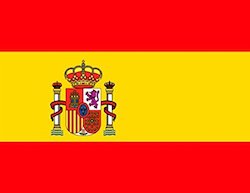Create your website: web development glossary
Anouk Jodry, 2018/06/21
This is a small guide of the basic vocabulary you need to know when you are launching your website, to understand and be understood by your web agency! To master the art of speaking like a real developer.

If you are launching your own company and searching for good vocabulary to understand and be understood by your web agency, then, this article was written for you! This are the essential keywords you must know about web development, if you want to create a website.
API: Application Programming Interface
The word to focus on is “interface”: because it gives the user the ability to interact with a program. For instance, on a e-commerce website we can integrate the Paypal API. Integrating an API, means that you are allowing communication between the client, the website, and Paypal. Once you have selected the payment method, the API sends the debit order from the website to Paypal, and Paypal validates (or not) the order, then the website can proceed with the transaction.
Front end vs. back end
These are two essential keywords you must understand when you are launching your site: on the one hand, the front end refers to what is visible on your website, the user-friendly interface, the one you see, and can interact with.On the other hand, the back end refers to the server that manage the operation and storage of your website.Therefore, the front end is the visible side for users and the back end refers to the server, which is not perceived by users.
From scratch
It means to create a new website, without any previous base, not even an old website.
You might think it is quite radical, especially if you just want to redesign your web, but it is an excellent way to start over good basis, and develop customized projects.
Staging/Test vs. Live/Production
Staging is an environment that gives an overview of the results of the site that is being developed by the web agency and it is only available to the agency and the client. Once a project is complete, the Staging site becomes a Production site, which is also known as Live.
However, the Staging site does not disappear once the deployment has been made, you will have two parallel environments, Staging and Live. Live, as well as Staging, undergo several changes (product modification, bug fixes, etc ...). Staging becomes a test environment, to make adjustments without the risk of breaking the production site. Once the adjustments are tested, they are implemented on the Live environment.
Domain Name
You will probably begin your project wondering how to name your business, or website, to buy your domain name accordingly. A domain name is a traduction of your IP address, easier to remember than a large sequence of numbers. It is the identity of your website. For more details, read the article on How to choose your domain name

URL
URL, which means Uniform Resource Locator, answers to these 3 questions: how? where? and what?
In details, a URL https://www.subforce-solutions.com/fr/contact can be divided in 3 parts.
HOW - https:// means how we are using the URL: by using the https protocol.
WHERE - subforce-solutions.com it refers to the information on the www server, which helps you find the domaine subforce-solutions.com
WHAT - en/contact indicates the information that must be displayed, in this case, the English repertory, and the contact form.
Framework
Literally framework, means a frame that is supposed to defined rules. It gathers the directives of a software.
Imagine a toolbox, with optimized tools, in order to work efficiently instead of a hand screwdriver, you will work with a cordless screwdriver. A framework works exactly the same: it is a program that gathers different features and has been conceived to avoid repetitive tasks, by making them automated.
Usually, it is generic and not really specialised, which makes its applications area broad.
Tags
It is a descriptive language, that helps organizing the content of a document. There are about 140 tags in total, that give information about the content (also call metadata, see article below) for the html document. Among the most known, you must have heard of
,
to define titles,
for basic paragraphs, for images content and

Backlinks/ Internal links
Backlinks are links that redirect the user to another website. In fact, when a source of information has recommended you on his webpage: for you, it is a backlink, because it redirects the user to your website.
Here are two reasons why backlinks are key in your referencing strategy:
The more backlinks you have, the better chances you'll have of ranking high in Google positioning.
The more backlinks you have, the better chances you'll have of getting a bigger volume of visitors .
Watch out! You must pay attention to the quality of the source that is referring to you. You must address similar subjects, and have similar business concerns, because Google takes into account these criterias in its algorithm.
Backup
It is a copy of datas, that are kept secure in an information system. The goal is to keep these datas for a certain time, to be able to restore it, if needed. Generally it is very useful when you lose your data, or if you need to return to your original file.
SEO
Search Engine Optimization, stands for search engine optimization. This is the set of techniques that are implemented to facilitate the reading of your web page by indexing robots, so that it can appear among the first results of search engines.
Optimize your SEO is one of the key services that will help you to promote your business. There is no point in creating a web page if it does not have visibility.
For more information, you can read our article on SEO

Responsive
It is a website design that responds/adapts on different devices such as tablets, smartphones, laptop. This improves the user experience, additionally avoiding the use of horizontal scrolling, or zoom, is helpful to maintain a certain visual comfort.

Web hosting
A web host provides storage space on its servers. When you have saved your files and data from your website on a particular server, you have made this storage space your web hosting.
For more information on what type of hosting you should choose for your digital project







Commentaires
Poster